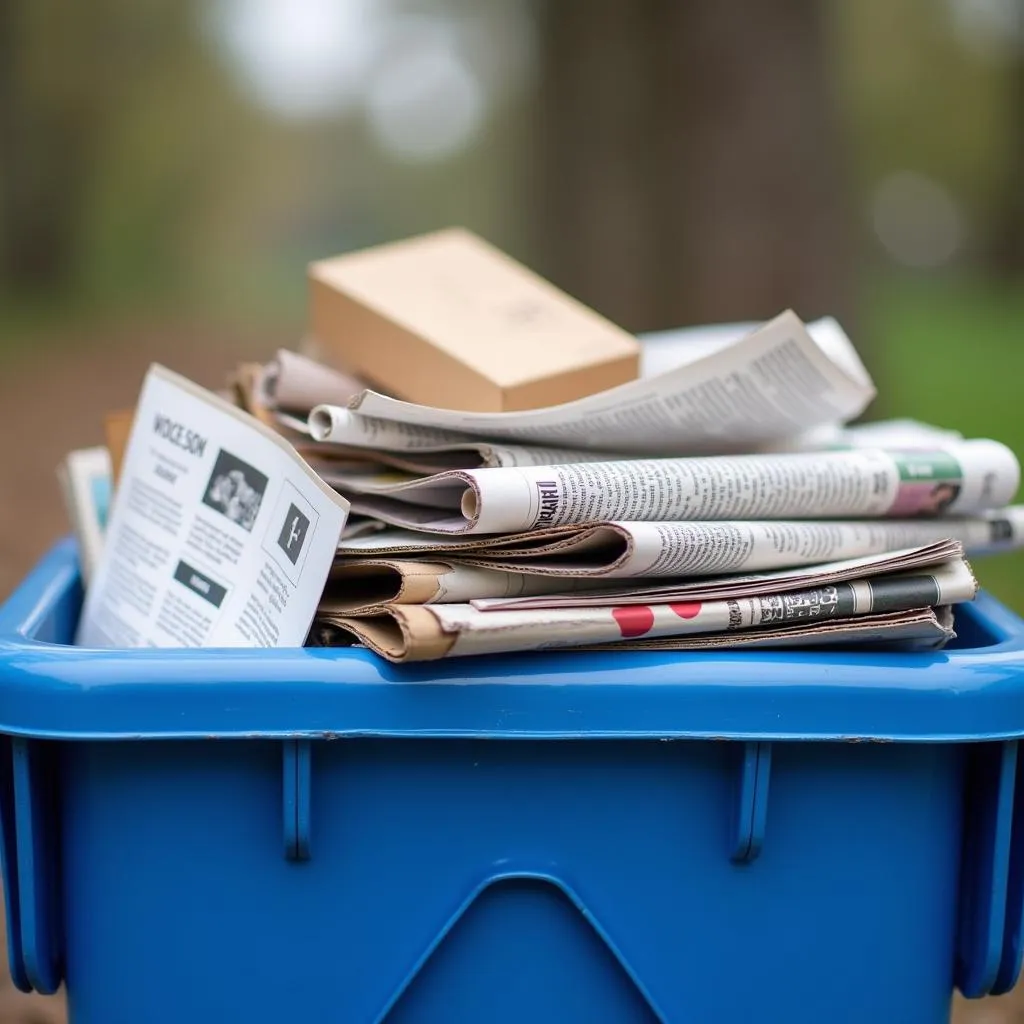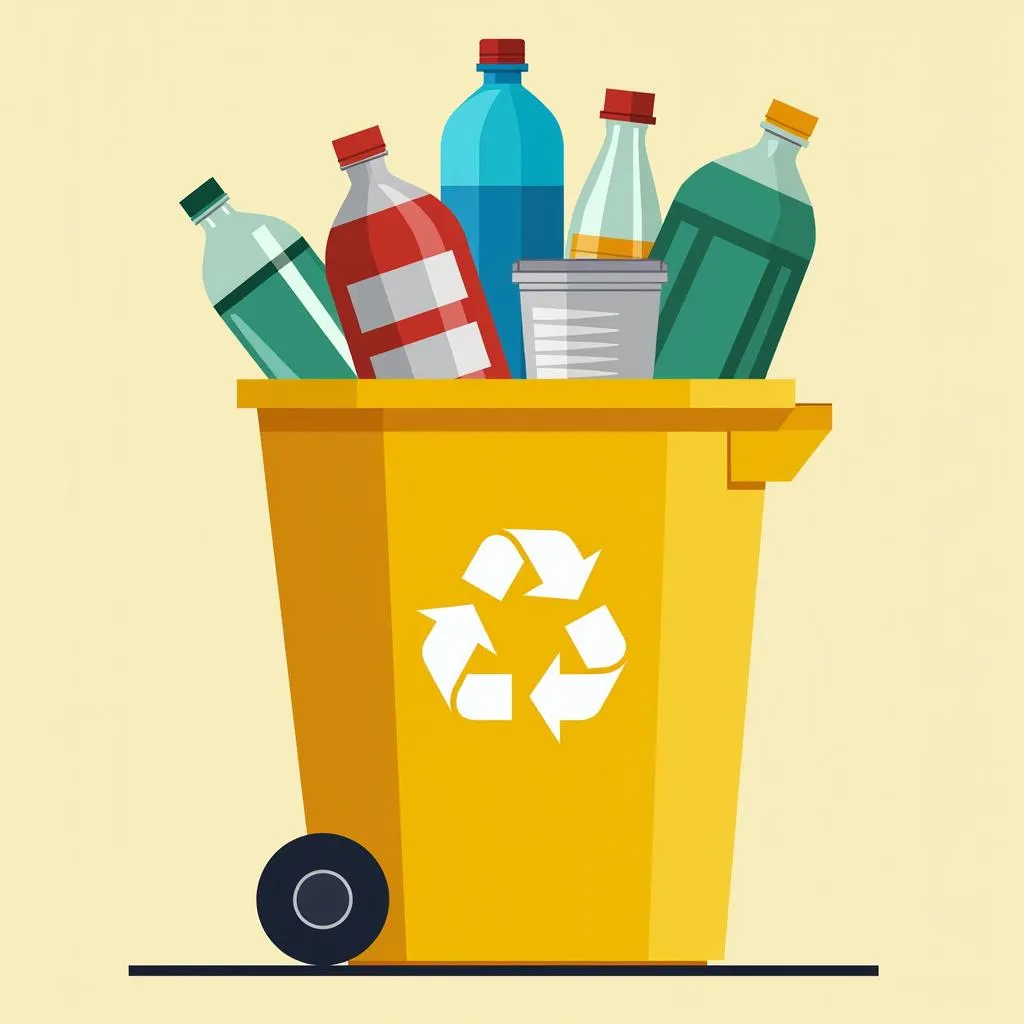“What color is the recycle bin?” It’s a question many of us have asked, often as we stand with trash in hand, unsure of its proper destination. While the answer might seem simple, the world of recycling bins isn’t always black and white. In fact, it’s often a rainbow of colors, each hue signifying a specific type of recyclable material. Understanding these color codes is key to responsible waste management and a healthier planet.
Decoding the Rainbow: Common Recycling Bin Colors and Their Meanings
Different regions and countries may have their own unique color systems for recycling bins. However, some colors are widely used and associated with specific materials. Let’s break down the most common ones:
1. Blue Bins: Paper and Cardboard
The color blue is often linked to tranquility and vastness, much like the paper products it represents. Blue bins typically collect:
- Paper: Newspapers, magazines, office paper, mail, envelopes
- Cardboard: Boxes (broken down), cereal boxes, paperboard packaging
 Blue recycling bin overflowing with paper and cardboard
Blue recycling bin overflowing with paper and cardboard
2. Green Bins: Glass
Green, symbolizing nature and renewal, is a fitting choice for glass recycling. Green bins typically collect:
- Glass bottles and jars: Clear, green, and brown glass containers
Important: Remember to rinse glass containers before recycling to remove food residue.
3. Yellow Bins: Plastic and Metal
Yellow, often associated with caution, reminds us to be mindful of what we put in these bins. Yellow bins typically collect:
- Plastic: Bottles, jugs, tubs, and some types of plastic film (check local guidelines)
- Metal: Aluminum and steel cans, tin foil
 Yellow recycling bin with plastic and metal items
Yellow recycling bin with plastic and metal items
4. Brown Bins: Organic Waste
Brown, the color of earth, signifies compostable materials. Brown bins typically collect:
- Food scraps: Fruits, vegetables, eggshells, coffee grounds
- Yard waste: Leaves, grass clippings, small branches
Beyond the Basics: Variations and Regional Differences
While the colors mentioned above are widely used, it’s crucial to remember that there can be variations. Some regions might use different colors or combine material categories within a single bin.
Pro Tip: “Don’t let confusion lead to contamination,” says renowned recycling advocate, Emily Carter. “Always check with your local municipality or waste management company to confirm the specific color codes and materials accepted in your area.”
Navigating the Gray Areas: What About Items That Don’t Fit?
Not everything can be recycled. Items like plastic bags, electronics, batteries, and light bulbs often require specialized recycling programs. It’s always best to err on the side of caution and check with your local guidelines if you’re unsure about an item’s recyclability.
The Importance of Proper Recycling: Why Color Coding Matters
Recycling is more than just a feel-good practice; it’s a crucial step towards a sustainable future. Proper waste sorting, guided by color-coded bins, helps to:
- Conserve natural resources: Recycling reduces the need to extract raw materials.
- Reduce landfill space: Diverting waste from landfills helps minimize environmental impact.
- Lower greenhouse gas emissions: Recycling processes generally consume less energy than manufacturing new products from scratch.
Conclusion: Making a Difference One Bin at a Time
The next time you approach your recycling bins, armed with the knowledge of their color-coded language, you’ll be making a conscious choice to contribute to a greener planet. Remember, even small actions, multiplied by millions, can have a profound impact on our environment. So, embrace the rainbow of recycling and let’s work together towards a more sustainable future.

